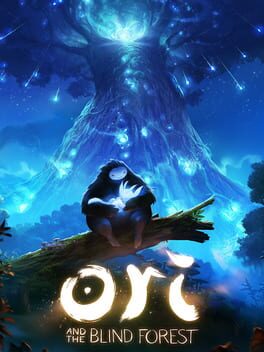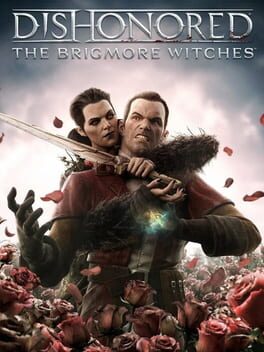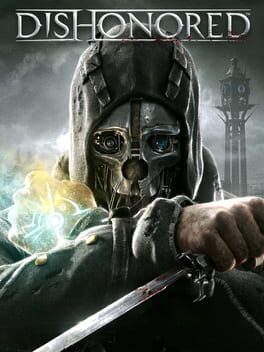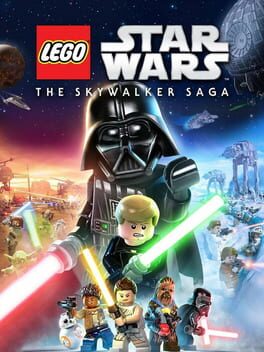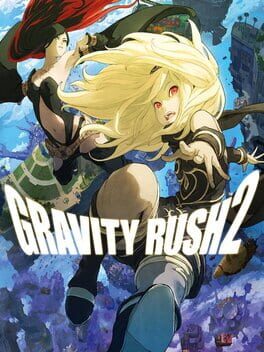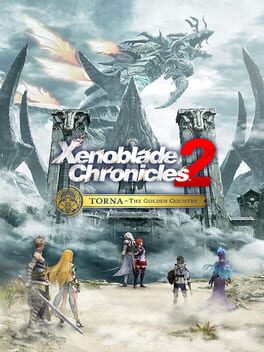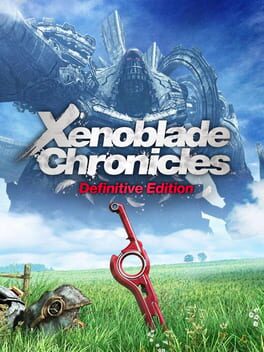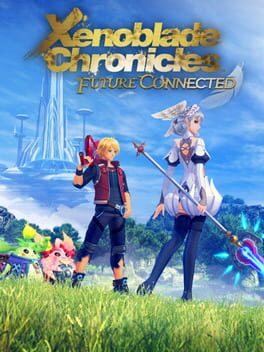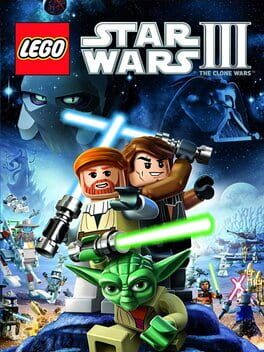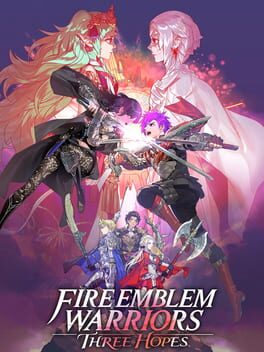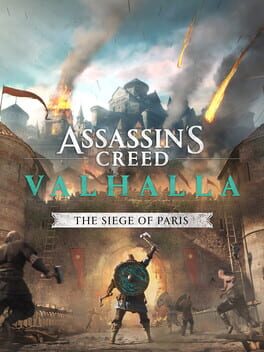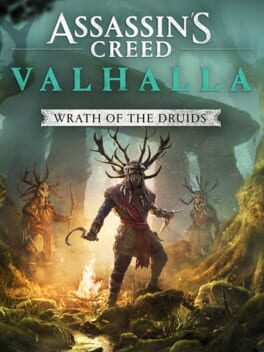funsohng
A very beautiful game that I hoped it was as good as it looked.
It is undeniable that Ori and The Blind Forest is beautiful, but sometimes, that beauty with overloaded effects can work against the player. Moments where you simply cannot see where you are or what you are doing because the bright and colourful effects explodes around Ori are far too frequent. Sometimes the foreground blocks the view of the game. The game's graphics effectively hinders gameplay, instead of working to serve it as it should (you know, as a video game).
I usually don't care about linearity in a Metroidvania game, I love Metroid Fusion, but the way Ori's level design comes together really does not feel all that novel: when an area connects, it's less of the joy of discovery and more of "oh, here again." Much of the usual backtracking is also confined to simple items, and most of the games "big areas" are more or less separate, including the three main dungeons.
The level design at the local level for each of these dungeons is marvelous. Essentially, Ori and the Blind Forest is a puzzle platformer first and foremost; its openness is nothing too impressive, and its combat is quite mediocre. But the platforming challenges are design very well, testing the players both in their ability to understand how to navigate, as well as their platforming skill itself. The skills you unlock are used frequently in conjunction with one another in increasingly more elaborate platforming puzzles and set pieces, showcasing some of the most exhilerating moments.
The problem is, the control of the platforming itself is not that satisfying. The jumps and movements are far too floaty and momentum heavy, making it feel much more imprecise than it should be. This leads to extremely frustrating sequences in set piece moments where you are constantly dying because of input error that you didn't mean. For example, while gliding, the only way to lower your altitude is to let go of the gliding, since pulling down the analogue stick would result in stomp (and instant death in most areas that require gliding). However, the speed of your movement while you are gliding is very much momentum-based, and sometimes it's so easy to accidentally stomp straight down you the spikes.
Then there is the downright mediocre combat. Basically, you spam the attack button, which fires auto-targetted projectiles at your enemies. Problem is, the range and aiming is difficult to gauge in the mess of a fight. There is no way to snipe enemies either. Combat in fact does not evolve after getting stomp, which has pretty limited uses anyway. Considering that most of the enemies throw projectiles at you in a pretty random manner, it becomes far too hectic for it be sophisticated. These enemy projectiles also works to further frustrate platforming, since the last third of the game depends on you to use a skill that lets you bounce off of these enemy projectiles--which becomes incredibly annoying when these projectiles are fired in a random pattern and timing, while your in-air controls are pretty unsatisfying already due to how imprecise it is to keep the momentum.
It is undeniable that Ori and The Blind Forest is beautiful, but sometimes, that beauty with overloaded effects can work against the player. Moments where you simply cannot see where you are or what you are doing because the bright and colourful effects explodes around Ori are far too frequent. Sometimes the foreground blocks the view of the game. The game's graphics effectively hinders gameplay, instead of working to serve it as it should (you know, as a video game).
I usually don't care about linearity in a Metroidvania game, I love Metroid Fusion, but the way Ori's level design comes together really does not feel all that novel: when an area connects, it's less of the joy of discovery and more of "oh, here again." Much of the usual backtracking is also confined to simple items, and most of the games "big areas" are more or less separate, including the three main dungeons.
The level design at the local level for each of these dungeons is marvelous. Essentially, Ori and the Blind Forest is a puzzle platformer first and foremost; its openness is nothing too impressive, and its combat is quite mediocre. But the platforming challenges are design very well, testing the players both in their ability to understand how to navigate, as well as their platforming skill itself. The skills you unlock are used frequently in conjunction with one another in increasingly more elaborate platforming puzzles and set pieces, showcasing some of the most exhilerating moments.
The problem is, the control of the platforming itself is not that satisfying. The jumps and movements are far too floaty and momentum heavy, making it feel much more imprecise than it should be. This leads to extremely frustrating sequences in set piece moments where you are constantly dying because of input error that you didn't mean. For example, while gliding, the only way to lower your altitude is to let go of the gliding, since pulling down the analogue stick would result in stomp (and instant death in most areas that require gliding). However, the speed of your movement while you are gliding is very much momentum-based, and sometimes it's so easy to accidentally stomp straight down you the spikes.
Then there is the downright mediocre combat. Basically, you spam the attack button, which fires auto-targetted projectiles at your enemies. Problem is, the range and aiming is difficult to gauge in the mess of a fight. There is no way to snipe enemies either. Combat in fact does not evolve after getting stomp, which has pretty limited uses anyway. Considering that most of the enemies throw projectiles at you in a pretty random manner, it becomes far too hectic for it be sophisticated. These enemy projectiles also works to further frustrate platforming, since the last third of the game depends on you to use a skill that lets you bounce off of these enemy projectiles--which becomes incredibly annoying when these projectiles are fired in a random pattern and timing, while your in-air controls are pretty unsatisfying already due to how imprecise it is to keep the momentum.
The Knife of Dunwall and The Brigmore Witches are one larger title with continuing story and progression, they could've well been a standalone title by themselves.
These two DLCs are not compromised in any way because they are DLCs. There is no "we had to cut corners here because this is a DLC, it's inherently limited in scope." This is more Dishonoured, but not just more of the same but more of the pleasant surprises that the main game brought with each and every level. Except the game expects you to have finished the main game before, so they just throw you into the large sandbox from the beginning.
These two DLCs are not compromised in any way because they are DLCs. There is no "we had to cut corners here because this is a DLC, it's inherently limited in scope." This is more Dishonoured, but not just more of the same but more of the pleasant surprises that the main game brought with each and every level. Except the game expects you to have finished the main game before, so they just throw you into the large sandbox from the beginning.
2012
Played the tutorial level back in 2017 or so, and while it was interesting, it wasn't something that gripped me. Stealth itself felt a bit too shallow, while the level design was extremely linear. And people were calling this "immersive sim" and back then the only immersive sim I've played (or so had I thought) was Bioshock.... which to me was ultimately a sub-par linear shooter than some generational masterpiece I was led to believe.
Turns out, people actually don't call Bioshock immersive sim much (even though it's supposedly a System Shock's spiritual successor?), and Dishonoured's tutorial level is an extremely poor representation of what the rest of the game is. The stealth and things you can do are very accessible for a first-timers of the genre like myself, but the level design is a delightfully intricate toybox of sort, with each elements carefully sprinkled throughout that nothing is TOO out of reach. When you discover a new way to doing an objective, it feels genuinely emergent, even though when you think about it, the developers definitely put the hints there for you to notice (whether it be clues, visual cues or level design that makes you go "I think I can do that").
It's a game made up of the best quests of New Vegas. Or what I always wanted Ubisoft game to be when it has some inexplicable limitations in its systemic gameplay. As it happens, I've always wanted a game like this, without knowing I already had it installed a long time ago.
Turns out, people actually don't call Bioshock immersive sim much (even though it's supposedly a System Shock's spiritual successor?), and Dishonoured's tutorial level is an extremely poor representation of what the rest of the game is. The stealth and things you can do are very accessible for a first-timers of the genre like myself, but the level design is a delightfully intricate toybox of sort, with each elements carefully sprinkled throughout that nothing is TOO out of reach. When you discover a new way to doing an objective, it feels genuinely emergent, even though when you think about it, the developers definitely put the hints there for you to notice (whether it be clues, visual cues or level design that makes you go "I think I can do that").
It's a game made up of the best quests of New Vegas. Or what I always wanted Ubisoft game to be when it has some inexplicable limitations in its systemic gameplay. As it happens, I've always wanted a game like this, without knowing I already had it installed a long time ago.
2017
You could tell there really were only two people in the internal QA team.
What a nightmarish control and combat design. 80% of the combat is looking for your target offscreen, and the other 20% is wrestling with the controls and camera to actually land a hit. The world, especially the Hong Kong/Macau/Singapore-inspired first city, is visually great, but the activities in it are just chore after chores.
Seriously. If your game is a melee-focused game with no lock-on, then why do you even have attacks on face buttons. That's a goddamn sin. If melee felt good enough, at least to the level of a competent-yet-shallow games like Nier Automata, I wouldn't complain, but good lord, the melee combat in this is just absolutely janky beyond reason. There is no flow to anything, no real strategy, no actual satisfaction of landing a massive attack. Every time you hit something, it's either mediocre feedback or feels like an accident, and when you pull off a special, then it's just scripted cutscene.
What a nightmarish control and combat design. 80% of the combat is looking for your target offscreen, and the other 20% is wrestling with the controls and camera to actually land a hit. The world, especially the Hong Kong/Macau/Singapore-inspired first city, is visually great, but the activities in it are just chore after chores.
Seriously. If your game is a melee-focused game with no lock-on, then why do you even have attacks on face buttons. That's a goddamn sin. If melee felt good enough, at least to the level of a competent-yet-shallow games like Nier Automata, I wouldn't complain, but good lord, the melee combat in this is just absolutely janky beyond reason. There is no flow to anything, no real strategy, no actual satisfaction of landing a massive attack. Every time you hit something, it's either mediocre feedback or feels like an accident, and when you pull off a special, then it's just scripted cutscene.
Playing it after the third game, you can see how this was the proto-Xenoblade 3.
The biggest love-hate aspect of this standalone expansion is the fact that you have to do a bulk of side quests to progress the main story. This does hamper the main story's pacing, since you are gated when it feels like they don't have time to waste. But on the other hand, it builds up a community of NPCs that you can feel attached to, amplifying the ending's effect. Some quests are also interconnected, which leads to nice, wholesome moments in later quests.
Also, the final boss of this is arguably more hype than the main game.
The biggest love-hate aspect of this standalone expansion is the fact that you have to do a bulk of side quests to progress the main story. This does hamper the main story's pacing, since you are gated when it feels like they don't have time to waste. But on the other hand, it builds up a community of NPCs that you can feel attached to, amplifying the ending's effect. Some quests are also interconnected, which leads to nice, wholesome moments in later quests.
Also, the final boss of this is arguably more hype than the main game.
Xenoblade 2 was my first Xenoblade game, probably as with many others. I loved so many aspects of it, but back when I played it for the first time, I also did not appreciate a lot of annoying QoL issues as well as fundamental design choices.
Fast-forward now, I've played 1 on Wii, 3 and DE, along with Torna and Future Connected, and I capped off my Xenoblade run with an NG+ run I've been meaning to do for years now.
One thing I imemdiately noticed that I somehow forgot before was that Rex is actually an incredibly mature character. His first lines are about how the world is ending and wondering what he can do about it. And with that, the game starts off much somber than I initially remembered.
This hint of heavier themes persist throughout and when it does become the focus of the game in later chapters, especially from chapter 6 and onwards, I appreciated that it wasn't just a sudden tonal shift, but a carefully laid out storytelling that was building up for this change. Outside of Torah, who provides much needed comic relief in the later chapters, every character harbours a darker and serious side to them, and they never feel like a simple one dimensional characters; they are not morally "grey," but they understand the darker side of the world and deal with them in their own ways. Even Poppi is turned out to be a less of an anime trope and a character with dilemma and anxiety as you progress. All of this coincides with later chapters' twists after twists, and how they all come together is absolutely satisfying.
Combat is also different from the third game to be just dismissed as the "worse" version of it. Different blades builds, as well as how blade and driver combos can be set up, mean that the combat has a different kind of depth than the third game which focuses more on the class system. Add in the fact that it is the only game in the series with auto attack cancel (not the art cancel, which also exists in Xenoblade 3) being a fundamental skill, the combat's tempo is very different from the first or the third game. There is also the affinity rings where each blade's growth is unique and often requires doing specific things that are tied to their character and their own blade quests. All rare blades are not only unique in appearance and how the play, but how they develop as well. This culminates to a unique system that positively impacts how blades function in the game as well as the diegesis.
Fast-forward now, I've played 1 on Wii, 3 and DE, along with Torna and Future Connected, and I capped off my Xenoblade run with an NG+ run I've been meaning to do for years now.
One thing I imemdiately noticed that I somehow forgot before was that Rex is actually an incredibly mature character. His first lines are about how the world is ending and wondering what he can do about it. And with that, the game starts off much somber than I initially remembered.
This hint of heavier themes persist throughout and when it does become the focus of the game in later chapters, especially from chapter 6 and onwards, I appreciated that it wasn't just a sudden tonal shift, but a carefully laid out storytelling that was building up for this change. Outside of Torah, who provides much needed comic relief in the later chapters, every character harbours a darker and serious side to them, and they never feel like a simple one dimensional characters; they are not morally "grey," but they understand the darker side of the world and deal with them in their own ways. Even Poppi is turned out to be a less of an anime trope and a character with dilemma and anxiety as you progress. All of this coincides with later chapters' twists after twists, and how they all come together is absolutely satisfying.
Combat is also different from the third game to be just dismissed as the "worse" version of it. Different blades builds, as well as how blade and driver combos can be set up, mean that the combat has a different kind of depth than the third game which focuses more on the class system. Add in the fact that it is the only game in the series with auto attack cancel (not the art cancel, which also exists in Xenoblade 3) being a fundamental skill, the combat's tempo is very different from the first or the third game. There is also the affinity rings where each blade's growth is unique and often requires doing specific things that are tied to their character and their own blade quests. All rare blades are not only unique in appearance and how the play, but how they develop as well. This culminates to a unique system that positively impacts how blades function in the game as well as the diegesis.
One of the hosts of The Back Page podcast said Xenoblade is "Takahashi making the best PS2 JRPGs ever, and that's amazing." And really, this is the best PS2 JRPG, and I mean that as the best way possible.
When I played the first game on Wii, I really just wanted to finish the story because I was so mesmerized with its world. Definitive Edition improves that aspect greatly with its new graphical enhancements and characters that look like proper humans with facial textures that doesn't look like a low resolution glitch. But the added quality-of-life features such as hugely improved UI, options to customize difficulty, better navigational mechanics, now the game itself shines even more. Even though this first entry to the series lacks the rhythmic chains and combos of the second and third game, it makes up for it with depth for each character, some of who are wildly different in how they play. It also allows the most customization with in-depth gem crafting, equipment system and arts combos, offering a very different kind of satisfaction compared to its sequels. Once it clicks, its qualities are still great enough for the game to stand on its own as a different experience from its sequels.
And the world. It still is one of the most breathtaking RPG world to explore, with a sense of scale unparallelled. The way how the world designs visually situates each area in relation to where everything else is nothing short of genius. Unlike the characters, the environment itself didn't receive much upgrade, but really, it was already a masterful art direction that slight improvements to texture resolutions, lighting and effects do the wonders.
A truly timeless game.
When I played the first game on Wii, I really just wanted to finish the story because I was so mesmerized with its world. Definitive Edition improves that aspect greatly with its new graphical enhancements and characters that look like proper humans with facial textures that doesn't look like a low resolution glitch. But the added quality-of-life features such as hugely improved UI, options to customize difficulty, better navigational mechanics, now the game itself shines even more. Even though this first entry to the series lacks the rhythmic chains and combos of the second and third game, it makes up for it with depth for each character, some of who are wildly different in how they play. It also allows the most customization with in-depth gem crafting, equipment system and arts combos, offering a very different kind of satisfaction compared to its sequels. Once it clicks, its qualities are still great enough for the game to stand on its own as a different experience from its sequels.
And the world. It still is one of the most breathtaking RPG world to explore, with a sense of scale unparallelled. The way how the world designs visually situates each area in relation to where everything else is nothing short of genius. Unlike the characters, the environment itself didn't receive much upgrade, but really, it was already a masterful art direction that slight improvements to texture resolutions, lighting and effects do the wonders.
A truly timeless game.
2022
I must say, I wasn't expecting a lot from this at first. It was another Splatoon, looked pretty same-y, I will get it because I'm itching to play Splatoon again and maybe finally have an excuse to get Nintendo Switch Online.
After beating single player, this is honestly more than I expected. This has to be one of the better 3D platformers in this gen. Some of the level design is just nothing short of ingenius. The final boss could be up there for the best final boss of the year (no, we can't pretend Radagon isn't Elden Beast phase 1). It's not "just a tutorial for the multiplayer," it stands on its own (in fact, they are very much aware of previous campaigns being called tutorial and mocks at that directly). If Ratchet and Clank (2016) can be sold as a full priced game, then this single player campaign alone is worth the full price.
Except it has PVP that's still top of its game, one of the best horde mode PVEs, and now its own Gwent.
Also, Shiver. Big Man. Frye.
Back into the Ink, baby.
Team Fun.
After beating single player, this is honestly more than I expected. This has to be one of the better 3D platformers in this gen. Some of the level design is just nothing short of ingenius. The final boss could be up there for the best final boss of the year (no, we can't pretend Radagon isn't Elden Beast phase 1). It's not "just a tutorial for the multiplayer," it stands on its own (in fact, they are very much aware of previous campaigns being called tutorial and mocks at that directly). If Ratchet and Clank (2016) can be sold as a full priced game, then this single player campaign alone is worth the full price.
Except it has PVP that's still top of its game, one of the best horde mode PVEs, and now its own Gwent.
Also, Shiver. Big Man. Frye.
Back into the Ink, baby.
Team Fun.
A nice, fitting epilogue to the main game. Bionis' Shoulder is one of the best and most dense areas in the first game, evoking the similar visual awe that Gaur Plain first produced back in the main game. The gameplay is streamlined just right for a 7-10 hour bite-sized adventure, but the game feels a lot fuller than its playtime suggests. Really a must for the fans, especially since it gives a proper closure to Melia's character arc.
When I first got Lego Star Wars 3 as a bundle for XBOX 260 external HDD, my initial thought was "oh it's based on that terrible animated movie that made GOAT 2D Clone Wars animation non-canon." Then fast-forward 8-9 years, The Clone Wars is one of my favourite TV series of all time, Siege of Mandalore is one of my favourite Star Wars story of all time, and Ahsoka is one of my favourite Star Wars character of all time. In fact, the itch for anything related to Ahsoka was so great that I had to buy this game again on Steam just so I can play as her right away (since I don't have my 360 with me right now).
I enjoyed Lego Star Wars 1, even though it kind of spoiled the entire story of Episode 3 despite coming out a month or so before the film's release, and recent revisit to the series with Complete Series was a pleasant nostalgia trip, even though a lot of mechanic did feel rather dated. I was expecting a similar affair, and only really wanted to play as Ahsoka.
What I got instead was a marked improvement over its predecessor with interesting gimmicks throughout the game, from much better starfighter sections, a sort of RTS levels (that sadly get way too repetitive at the end game, but it's still interesting), and action and platforming that feels noticeably better due to smoother and almost free-flowing animation. As a game, this is better than Complete Saga by a mile, with better levels and better gimmicks.
As a licensed game that is meant to evoke certain nostalgia and fond memories of the stories it is based on, it is a tad bit disappointing. It's not necessarily the game's fault--it is likely that the developers weren't privy to the series' story after season 2, and they had to limit themselves to basing the game on the worst two seasons. And sadly, this means no Maul, no Mandalore and Death Watch (though technically they could've had them in a limited way), no Dathomir, etc. But if biggest problem of your licensed game is the fact the licensed stuff it's based on is not the best, then it really isn't a bad thing.
I enjoyed Lego Star Wars 1, even though it kind of spoiled the entire story of Episode 3 despite coming out a month or so before the film's release, and recent revisit to the series with Complete Series was a pleasant nostalgia trip, even though a lot of mechanic did feel rather dated. I was expecting a similar affair, and only really wanted to play as Ahsoka.
What I got instead was a marked improvement over its predecessor with interesting gimmicks throughout the game, from much better starfighter sections, a sort of RTS levels (that sadly get way too repetitive at the end game, but it's still interesting), and action and platforming that feels noticeably better due to smoother and almost free-flowing animation. As a game, this is better than Complete Saga by a mile, with better levels and better gimmicks.
As a licensed game that is meant to evoke certain nostalgia and fond memories of the stories it is based on, it is a tad bit disappointing. It's not necessarily the game's fault--it is likely that the developers weren't privy to the series' story after season 2, and they had to limit themselves to basing the game on the worst two seasons. And sadly, this means no Maul, no Mandalore and Death Watch (though technically they could've had them in a limited way), no Dathomir, etc. But if biggest problem of your licensed game is the fact the licensed stuff it's based on is not the best, then it really isn't a bad thing.
The original Fire Emblem Warriors was a proof of concept game that did not even think to expand its scope as a full-fledged standalone title of its own. It was a good Musou game, with great movesets and a hint of Fire Emblem's tactical gameplay spicing up the usual hack-n'-slash affair, but it was never more than a typical collaboration game where it was really a Warriors game with Fire Emblem coat of paint, never seeking to truly maximize its potential of bringing these two franchises together. Fire Emblem Warriors: Three Hopes, however, is possibly the first Warriors collaboration project that is fully aware of the synergy between the two franchises it is merging, even more so than Persona 5 Strikers, which very much sacrificed the Warriors aspect for the sake of its Persona-ness.
On the outset, Three Hopes is simply Three Houses where battles are repalced with the Musou combat. But it's more than that. Three Hopes streamlines the camp/monastery activities in-between battles that became a slog in the main game, and allows it to feed into the fast-paced combat of the Warriors formula. The camp is smaller than the monastery but with all the important facilities present, and upgrading them feeds into the progression loop that is constantly satisfying. After a battle, there is always something to do--a facility to upgrade, a new support to watch, a new equipment to check out. The game keeps on going and once it finds its rhythm it can become dangerously addicting to some.
Perhaps the biggest difference Three Hopes has to other Musou games is the class system. Unlike other Musou games where a moveset usually equals a character, Three Hopes takes from its mainline counterpart to allow characters to change their classes at will, and the movesets are tied to classes and what weapon they use. Unlike the first Fire Emblem Warriors where the oversaturation of sword-users really hampered the tactical experience by not having enough options on lances or axes, Three Hopes allows a diversified and balanced party of characters at your disposal at all times. Characters are instead differentiated by their unique skills, their gimmicks that are applied to any moveset/class they use. In previous Musou games these gimmicks where tied to the movesets themselves; here the moveset is just another equipment that you can mix-and-match to build a character of your own.
And the freedom of build is very much there. The way Three Hopes fuses the character-building freedom of Three Houses and the fast-paced action of Musou really transcend this game to a proper action RPG. You can just use the preferred classes of each character, such as Annette as a tome-wiedling gremory, but why would you when she can ride a dragon with a hammer that deals magic damage? Maybe you want to have the testerone-obsessed Raphael use a physical tome to somehow beat the sh-t out of enemies with a book. The class sytem, unique personal skills, equippable abilities and arts, weapons with interesting attributes, these all synergize with each other to provide abundant opportunities to experiment at your heart's content.
The Musou combat itself is very much at its top form as well. While some movesets are from the original, it also has many new ones that can change pretty dramatically depending on which character you are using due to their unique abilities. As before, the game very much expects you to use the sword-axe-lance attack triangle when fighting enemy officers (and this time, gauntlet-tome-bow triangle is added), which means for the most part, you will be hoping from one character to other constantly, while ordering others to deal with far away NPCs. It's also important to use the newly added combat arts/magic mechanic--first introduced in Pirate Warriors 4 and now a staple of the recent Warriors games--as they break up the enemy's frequent super armour stances so their guard guage can be broken down. On top of these, add in the parries and perfect dodges (which were more or less perfected with Age of Calamity), the combat offers surprisingly wide variety of actions at your disposal--a simple button-mashing Musou game, this is not. The game is designed to have the player constantly check the map and give orders, maybe excessively so.
While most non-Musou fans wouldn't notice, but a lot of mechanics in Three Hopes are what Omega Force already experimented in their previous titles. Three different routes with world-map UI is from Warriors All-Stars, base-building has been staple of the series including Spirit of Sanada, the R-button active skills are from Pirate Warriors 4, which in turn is an evolution of Sacred Treasures system of Warriors Orochi 4, ordering troops and changing characters on the fly are from Samurai Warriors games, weapon weakness/strength and switching to deal with that are from Dynasty Warriors 8, dodge/parry have been in many of the recent titles most notably in Age of Calamity, and many of the unique gimmicks of each characters resemble those that were already present in Dynasty Warriors 8. But what makes Three Hopes stand out is that never have Omega Force actually brought these elements together to have its mechanics actually synergize so well that the gameplay loop is this natural and addicting. As a fusion of Musou and Three Houses, the game just works and works exceptionally well.
Of course, there are some gripes I have, but they are mostly "why didn't they go further here." For example, Battalions feel like a throw away mechanic here since they have no actual presence in the game other than giving a passive boost, unlike Three Houses where you could use special moves and they would actual be present on the battlefield. There also could be a bit more tactical options, such as being able to route multiple orders, or being able to order CPU combat arts on enemies. And there are some annoying decisions such as S-Rank being too annoying sometimes and the weapon grinding is too random compared to traditional Musou titles. But these problems are minor when the game's elements synergize so well. And that's the underlying key concept of this game, synergy. This is a game that has a plethora of mechanics that synergizes with each other to feed into a gameplay loop that keeps on going--something that Three House also did extremely well.
Now, an Empires mode as DLC would make it perfect.
On the outset, Three Hopes is simply Three Houses where battles are repalced with the Musou combat. But it's more than that. Three Hopes streamlines the camp/monastery activities in-between battles that became a slog in the main game, and allows it to feed into the fast-paced combat of the Warriors formula. The camp is smaller than the monastery but with all the important facilities present, and upgrading them feeds into the progression loop that is constantly satisfying. After a battle, there is always something to do--a facility to upgrade, a new support to watch, a new equipment to check out. The game keeps on going and once it finds its rhythm it can become dangerously addicting to some.
Perhaps the biggest difference Three Hopes has to other Musou games is the class system. Unlike other Musou games where a moveset usually equals a character, Three Hopes takes from its mainline counterpart to allow characters to change their classes at will, and the movesets are tied to classes and what weapon they use. Unlike the first Fire Emblem Warriors where the oversaturation of sword-users really hampered the tactical experience by not having enough options on lances or axes, Three Hopes allows a diversified and balanced party of characters at your disposal at all times. Characters are instead differentiated by their unique skills, their gimmicks that are applied to any moveset/class they use. In previous Musou games these gimmicks where tied to the movesets themselves; here the moveset is just another equipment that you can mix-and-match to build a character of your own.
And the freedom of build is very much there. The way Three Hopes fuses the character-building freedom of Three Houses and the fast-paced action of Musou really transcend this game to a proper action RPG. You can just use the preferred classes of each character, such as Annette as a tome-wiedling gremory, but why would you when she can ride a dragon with a hammer that deals magic damage? Maybe you want to have the testerone-obsessed Raphael use a physical tome to somehow beat the sh-t out of enemies with a book. The class sytem, unique personal skills, equippable abilities and arts, weapons with interesting attributes, these all synergize with each other to provide abundant opportunities to experiment at your heart's content.
The Musou combat itself is very much at its top form as well. While some movesets are from the original, it also has many new ones that can change pretty dramatically depending on which character you are using due to their unique abilities. As before, the game very much expects you to use the sword-axe-lance attack triangle when fighting enemy officers (and this time, gauntlet-tome-bow triangle is added), which means for the most part, you will be hoping from one character to other constantly, while ordering others to deal with far away NPCs. It's also important to use the newly added combat arts/magic mechanic--first introduced in Pirate Warriors 4 and now a staple of the recent Warriors games--as they break up the enemy's frequent super armour stances so their guard guage can be broken down. On top of these, add in the parries and perfect dodges (which were more or less perfected with Age of Calamity), the combat offers surprisingly wide variety of actions at your disposal--a simple button-mashing Musou game, this is not. The game is designed to have the player constantly check the map and give orders, maybe excessively so.
While most non-Musou fans wouldn't notice, but a lot of mechanics in Three Hopes are what Omega Force already experimented in their previous titles. Three different routes with world-map UI is from Warriors All-Stars, base-building has been staple of the series including Spirit of Sanada, the R-button active skills are from Pirate Warriors 4, which in turn is an evolution of Sacred Treasures system of Warriors Orochi 4, ordering troops and changing characters on the fly are from Samurai Warriors games, weapon weakness/strength and switching to deal with that are from Dynasty Warriors 8, dodge/parry have been in many of the recent titles most notably in Age of Calamity, and many of the unique gimmicks of each characters resemble those that were already present in Dynasty Warriors 8. But what makes Three Hopes stand out is that never have Omega Force actually brought these elements together to have its mechanics actually synergize so well that the gameplay loop is this natural and addicting. As a fusion of Musou and Three Houses, the game just works and works exceptionally well.
Of course, there are some gripes I have, but they are mostly "why didn't they go further here." For example, Battalions feel like a throw away mechanic here since they have no actual presence in the game other than giving a passive boost, unlike Three Houses where you could use special moves and they would actual be present on the battlefield. There also could be a bit more tactical options, such as being able to route multiple orders, or being able to order CPU combat arts on enemies. And there are some annoying decisions such as S-Rank being too annoying sometimes and the weapon grinding is too random compared to traditional Musou titles. But these problems are minor when the game's elements synergize so well. And that's the underlying key concept of this game, synergy. This is a game that has a plethora of mechanics that synergizes with each other to feed into a gameplay loop that keeps on going--something that Three House also did extremely well.
Now, an Empires mode as DLC would make it perfect.
It's no Curse of the Pharaohs or The Fate of Atlantis, but it is a marked improvement over the previous DLC, Wrath of the Druids. Whereas Wrath was an enlongated version of the worse of the main game, The Siege of Paris offers a more concentrated experience, with assassination missions from Unity and Syndicate making a come back. These are still more on the linear side, but they are still much more interesting than the seemingly random assassinations of the recent trilogy, even if there are only handful of them. The story is also a more fascinating look at men driven by madness and bloodlust, which reminds me more of competent period piece TV series than whatever cliched borefest Wrath was. It's still partially about a kid growing up to be a leader of the clan/people, but at least Toka is much more likable than any boys in the main game and Wrath. The side contents being absolutely useless and terrible also adds to the experience in a weird way since you will just ignore them, which is for the better.
